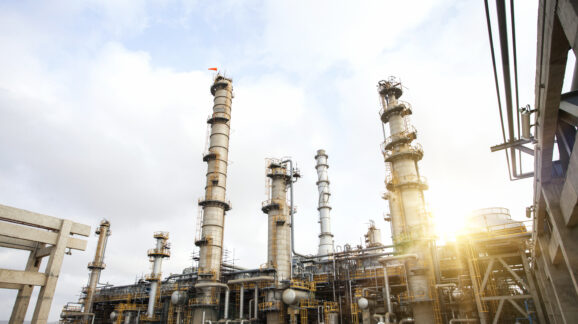The War On Natural Gas – Pipeline Edition

Photo Credit: Getty
The Biden Administration’s climate change-inspired war on natural gas continues on multiple fronts. Most recently in the news are the regulatory attempts to curtail the use of gas in home appliances, especially stoves. Meanwhile, the Administration’s go-slow approach to oil and natural gas leasing on federal lands is now in its third year, as is the administration’s policy of pressuring banks not to lend to natural gas producers. But every bit as damaging as the efforts to block the production and use of natural gas are those against the infrastructure that comes in between – the nation’s gas pipeline network. According to the Energy Information Administration (EIA), 2022 was a record low year for interstate pipeline capacity additions since the agency starting keeping statistics in 1995.
By all rights, it should have been a record high year, given the still-growing estimates of domestic natural gas reserves – a 32 percent jump from 2020 to 2021, the most recent year for which EIA has compiled data. Thanks to the shale revolution, the amount of natural gas used each year is less than the additional discoveries that can be economically developed. And there still is solid demand for natural gas, as is demonstrated by the high prices being paid by consumers in the U.S., tight supplies and risks of shortages plaguing New England, as well as growing liquefied natural gas (LNG) export opportunities that are both economically and geopolitically beneficial.
But the climate activists both inside and outside the government have targeted pipelines as a bottleneck they can readily control, especially given the lengthy permitting process under the National Environmental Policy Act (NEPA) and Natural Gas Act as well as numerous substantive environmental requirements that are all fodder for endless litigation by environmental groups. They realize that our nation’s natural gas abundance is useless if it can’t be transported to where it is needed.
The natural gas pipeline approval process is nearly impossible to navigate. To give an idea of the difficulties, consider two recent natural gas pipeline projects that fought environmental opponents all the way to the U.S. Supreme Court, won, but were stopped anyway. Even with Supreme Court victories in hand, the developers of the Atlantic Coast and PennEast projects still faced years of costly delays and no end in sight. Regarding the Atlantic Coast Pipeline, the Sierra Club downplayed the Supreme Court’s 2020 ruling and boasted that since the project was “still lacking 8 permits, this decision is just plugging just one hole on a sinking ship.” This included an Endangered Species Act permit, a special use permit and right-of-way grant from the U.S. Forest Service, a right-of-way permit from the National Park Service, and Clean Water Act authorizations and other permits from every impacted state. No wonder the project’s investors gave up.
The Atlantic Coast Pipeline would have provided another 1.5 billion cubic feet per day of capacity, considerably more than the 897,000 cubic feet the EIA says was added in 2022. The PennEast project could have added 1.1 billion. And the demise of both has had a chilling effect on other potential pipeline developers.
Granted, the permitting, regulatory, and legal delays predate the current administration, but now they have been made worse by team Biden. For example, the permitting process has been greatly complicated by the injection of climate considerations for fossil fuel-related projects like gas pipelines, and the current administration gives states wide leeway to block such projects on climate grounds. In addition, when facing environmental litigants in court, Biden Administration lawyers are all too quick to cave. This likely explains at least part of the record low year for new pipelines.
Nonetheless, some pipeline developers are still in the fight. The proponents of the Mountain Valley Pipeline, which like the Atlantic Coast and PennEast projects could carry more of the Appalachian region’s bounty of shale gas to customers on the East coast, have not yet given up. But the years-long ordeal to get final approval is not over. And, while the Mountain Valley project’s additional 2 billion cubic feet per day of capacity is twice what was added in 2022, it alone is not a difference maker.
In reality, the nation has both the natural gas supply and the demand to justify tens of billions more cubic feet per day of pipeline capacity. And no public funds would be necessary – unlike the massive 2021 infrastructure bill and 2022 Inflation Reduction Act and their taxpayer giveaways for wind and other renewables, these job-creating gas pipeline projects would be financed entirely by the private sector. The main thing missing is a President who wants them to be built.